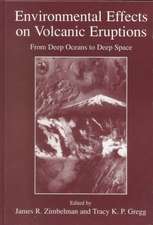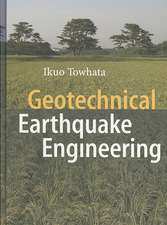Seismic Monitoring in Mines
Editat de A.J. Mendeckien Limba Engleză Hardback – 31 dec 1996
| Toate formatele și edițiile | Preț | Express |
|---|---|---|
| Paperback (1) | 1219.31 lei 6-8 săpt. | |
| SPRINGER NETHERLANDS – 28 sep 2011 | 1219.31 lei 6-8 săpt. | |
| Hardback (1) | 1226.90 lei 6-8 săpt. | |
| SPRINGER NETHERLANDS – 31 dec 1996 | 1226.90 lei 6-8 săpt. |
Preț: 1226.90 lei
Preț vechi: 1496.22 lei
-18% Nou
Puncte Express: 1840
Preț estimativ în valută:
234.80€ • 244.23$ • 193.84£
234.80€ • 244.23$ • 193.84£
Carte tipărită la comandă
Livrare economică 14-28 aprilie
Preluare comenzi: 021 569.72.76
Specificații
ISBN-13: 9780412753008
ISBN-10: 0412753006
Pagini: 262
Ilustrații: XIII, 262 p.
Greutate: 0.71 kg
Ediția:1997
Editura: SPRINGER NETHERLANDS
Colecția Springer
Locul publicării:Dordrecht, Netherlands
ISBN-10: 0412753006
Pagini: 262
Ilustrații: XIII, 262 p.
Greutate: 0.71 kg
Ediția:1997
Editura: SPRINGER NETHERLANDS
Colecția Springer
Locul publicării:Dordrecht, Netherlands
Public țintă
ResearchCuprins
1. Seismic transducers.- 1.1 Requirements imposed by ground motion.- 1.2 Theory of inertial sensor operation.- 1.3 Realizable sensor characteristics.- 1.4 Network considerations.- 1.5 Sensor orientation.- 2. Seismic monitoring systems.- 2.1 Signal conditioning.- 2.2 Triggering and validation.- 2.3 Digital data communications.- 2.4 Association.- 2.5 Central processing site.- 2.6 System Performance.- 3. Deconvolution, polarization and wavelet transform of seismic signals.- 3.1 Deconvolution.- 3.2 Polarisation.- 3.3 Wavelet transform.- 4. Seismic raytracing.- 4.1 Shooting and bending.- 4.2 Point-to-curve.- 4.3 Finite difference.- 4.4 Wavefront construction methods.- 5. Location of seismic events.- 5.1 Location by arrival times and/or directions or azimuths.- 5.2 Relative location and similarity of waveforms.- 5.3 Joint hypocentre and velocity determination for clusters of events.- 5.4 Optimal spatial distribution of seismic stations.- 6. Seismic velocity inversion from microseismic data.- 6.1 Seismic tomography.- 6.2 Arrival-time inversion.- 6.3 Application.- 6.4 Velocity inversion in a combined seismological and geomechanical investigation.- 7. Seismic source radiation and moment tensor in the time domain.- 7.1 Radiation from the seismic source — far, intermediate and near fields.- 7.2 Moment tensor.- 8. Spectral analysis and seismic source parameters.- 8.1 Fast Fourier transform and multitaper.- 8.2 Source parameters from spectra.- 9. Nonlinear dynamics of seismic flow of rock.- 9.1 Phase space.- 9.2 Reconstruction of the phase space from seismic data.- 9.3 Fractal correlation dimension.- 9.4 Numerical results.- 9.5 Lyapunov exponent and limits of predictability.- 10. Quantitative seismology and rockmass stability.- 10.1 Quantitative description of a seismic event.-10.2 Quantitative description of seismicity.- 10.3 Nucleation of instability and time to failure.- 11. Application of quantitative seismology in mines.- 11.1 Introduction.- 11.2 Benchmark case studies.- References.















